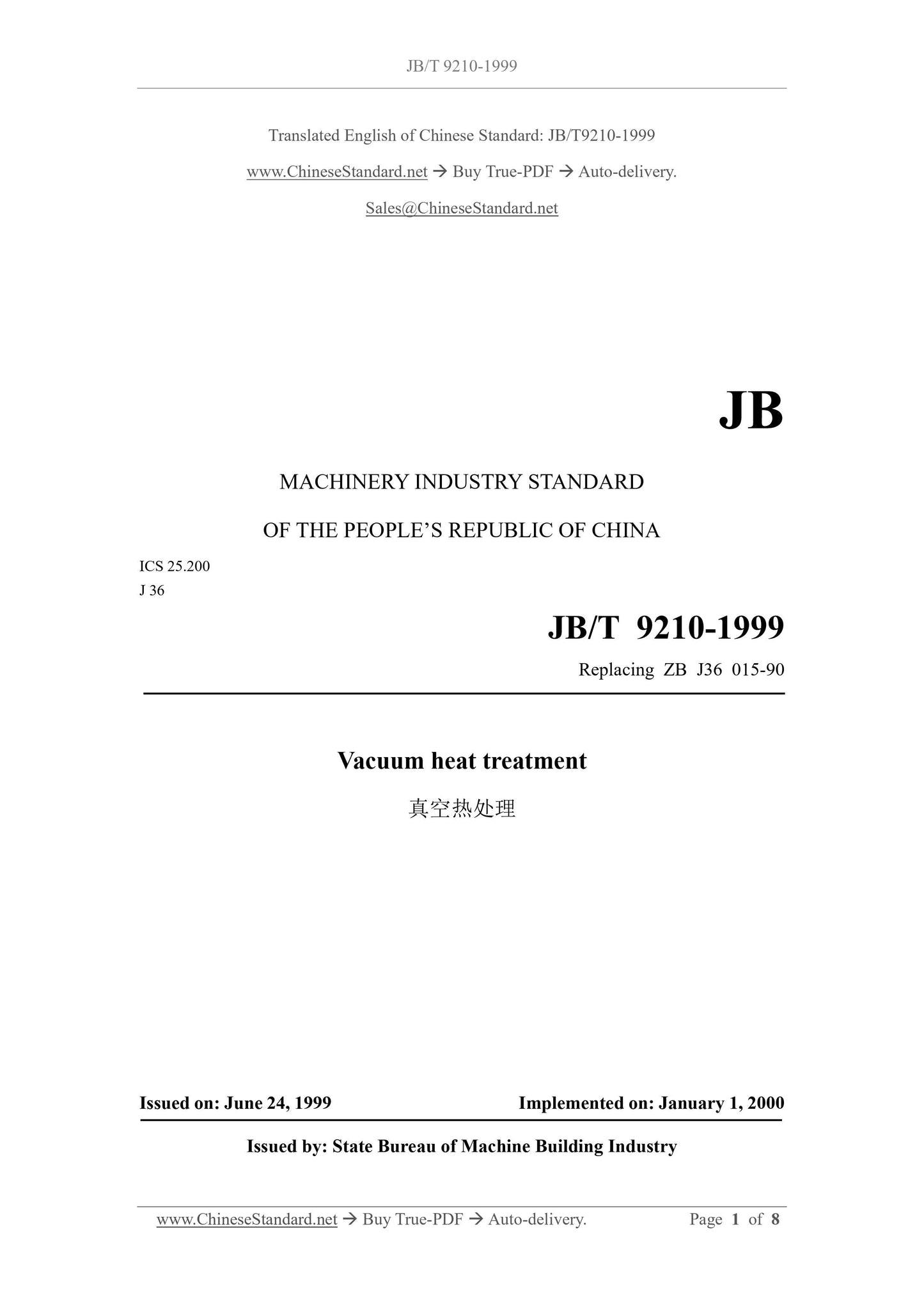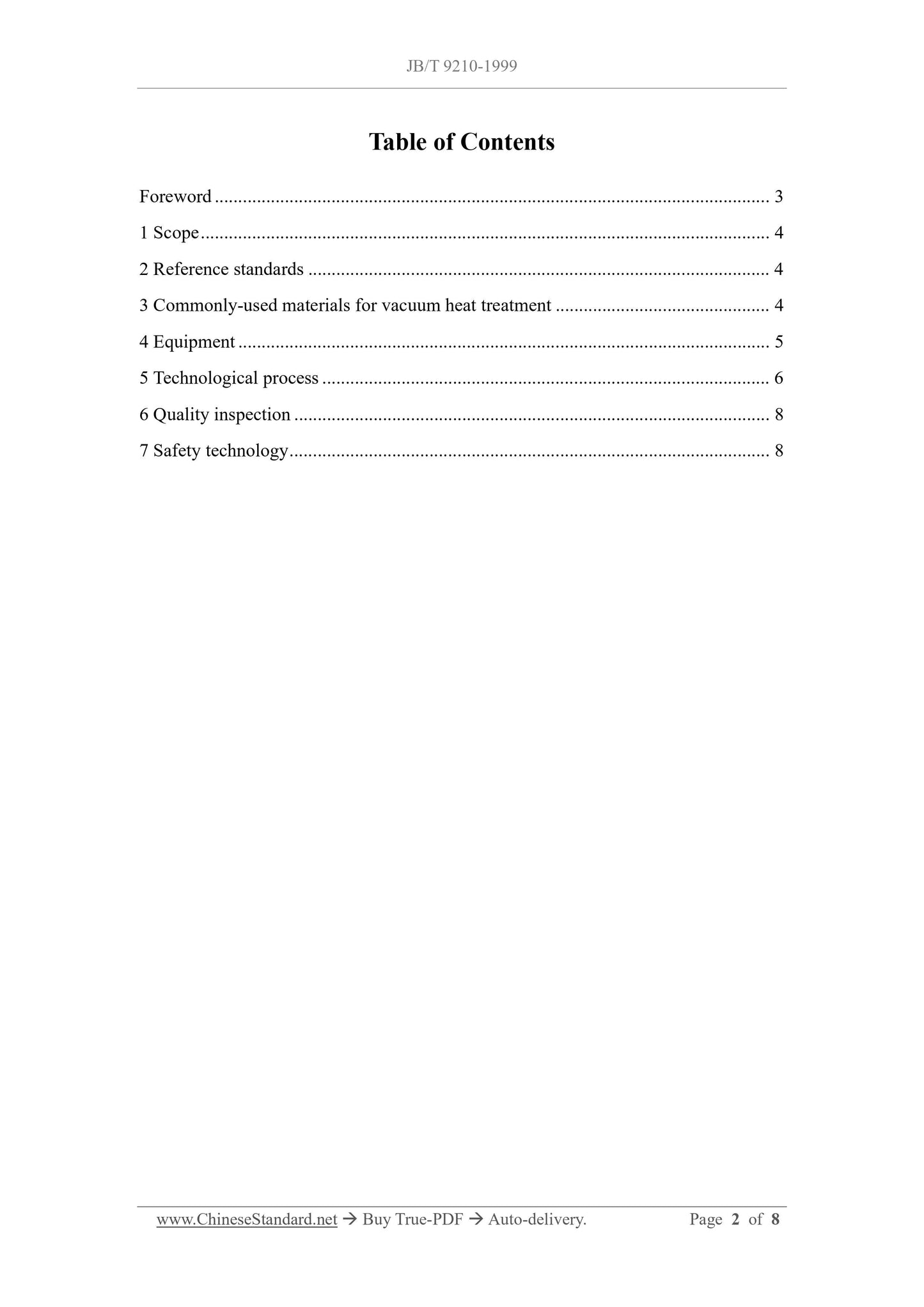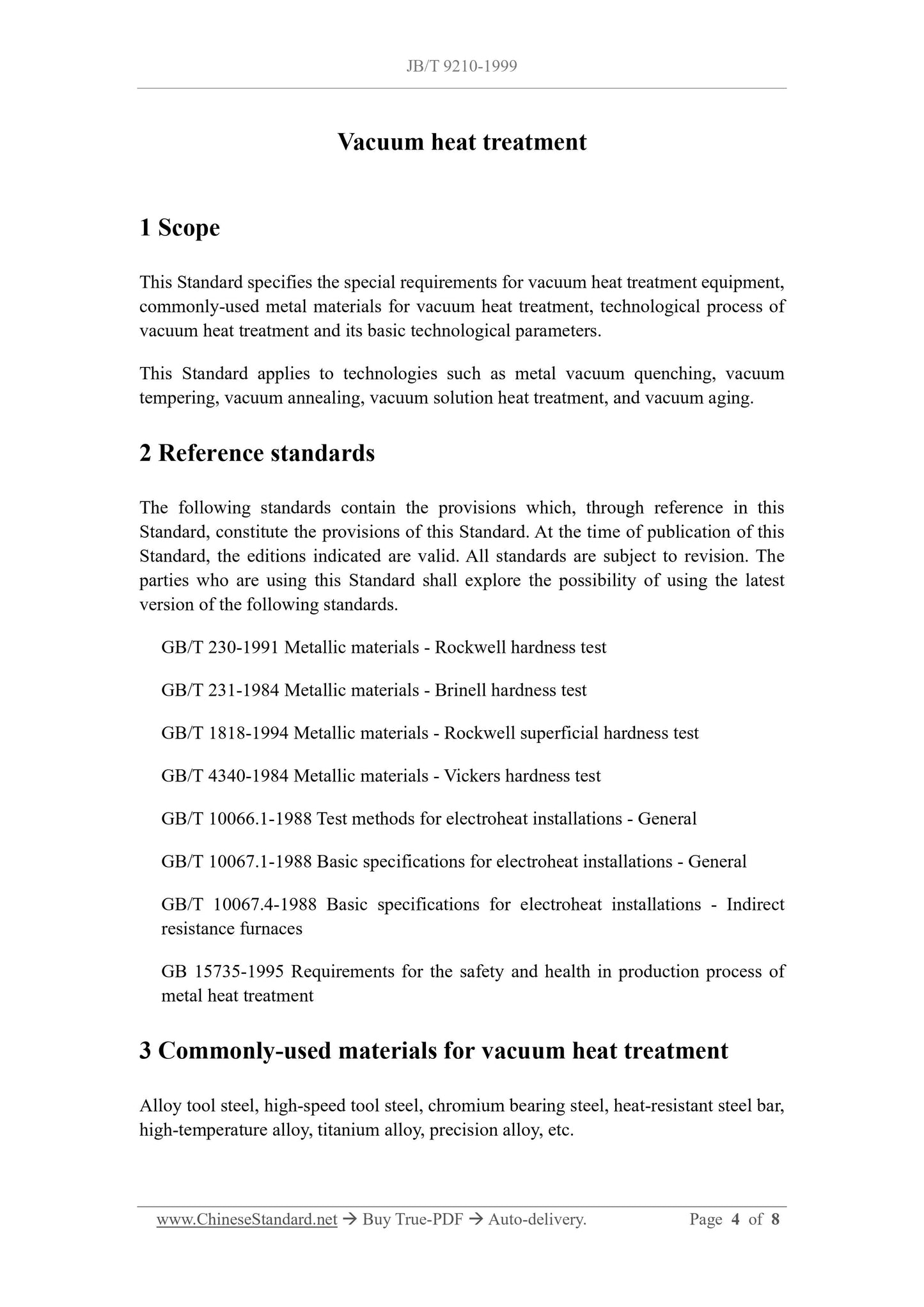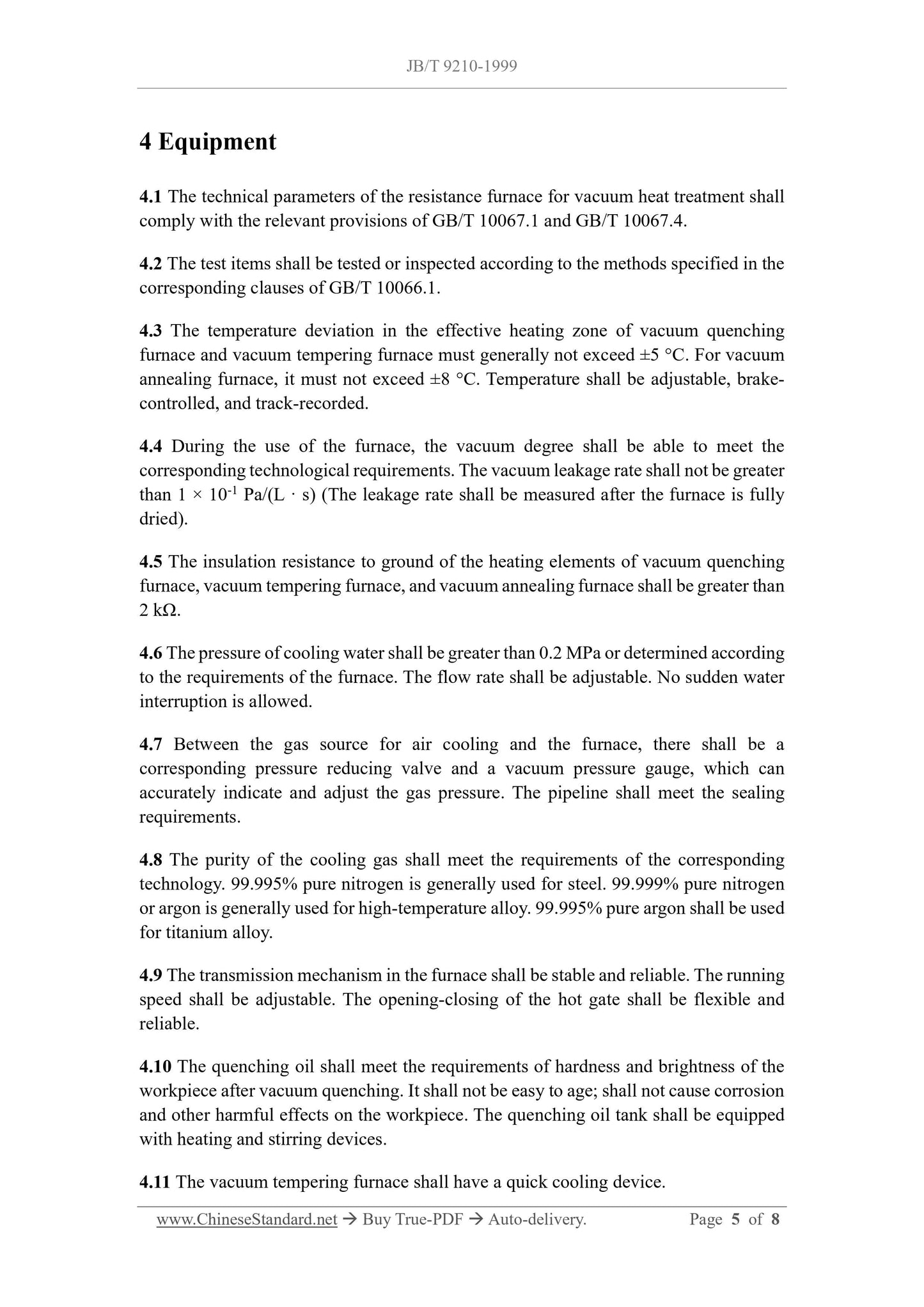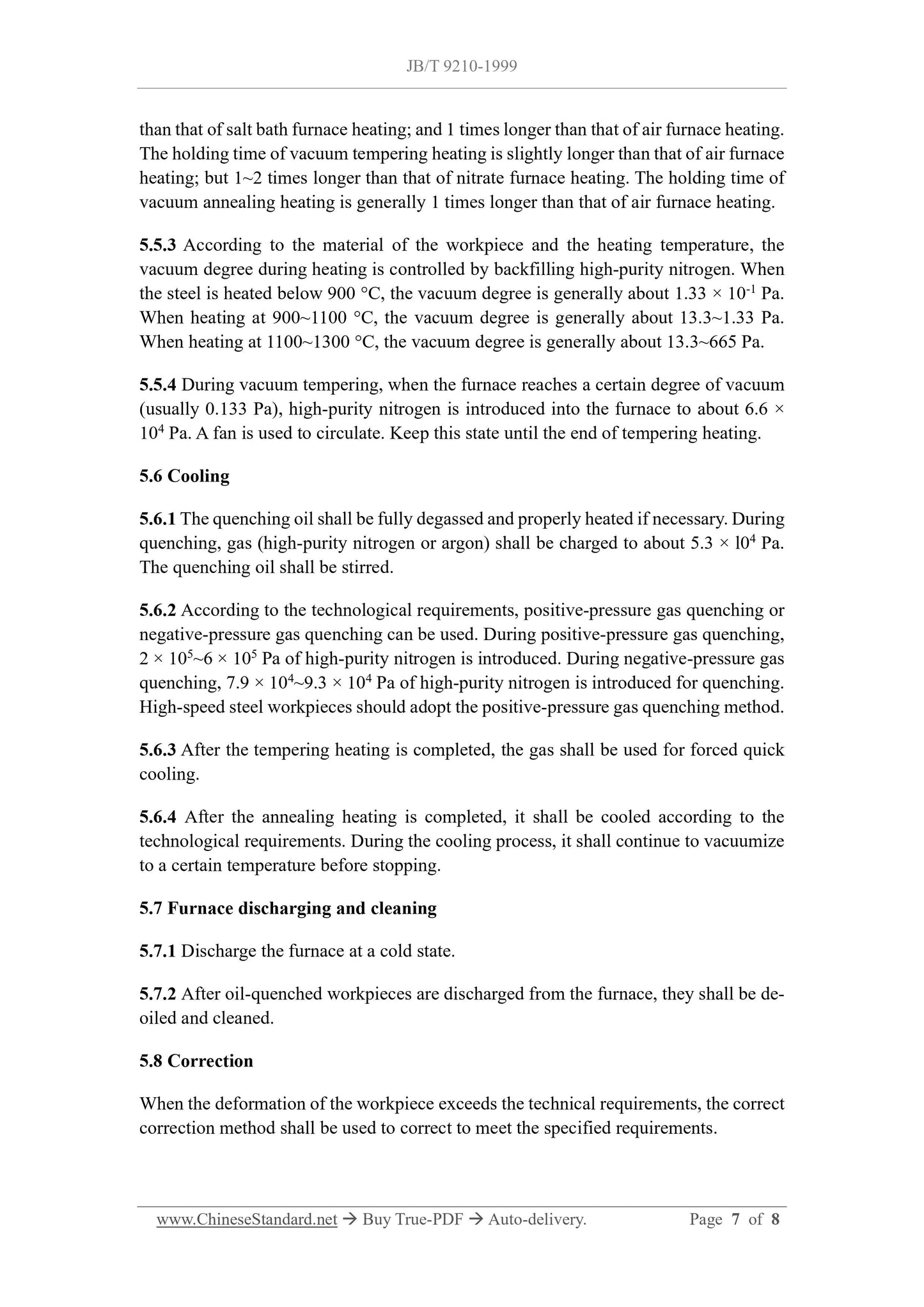1
/
of
5
www.ChineseStandard.us -- Field Test Asia Pte. Ltd.
JB/T 9210-1999 English PDF (JB/T9210-1999)
JB/T 9210-1999 English PDF (JB/T9210-1999)
Regular price
$230.00
Regular price
Sale price
$230.00
Unit price
/
per
Shipping calculated at checkout.
Couldn't load pickup availability
JB/T 9210-1999: Vacuum heat treatment
Delivery: 9 seconds. Download (and Email) true-PDF + Invoice.Get Quotation: Click JB/T 9210-1999 (Self-service in 1-minute)
Newer / historical versions: JB/T 9210-1999
Preview True-PDF
Scope
This Standard specifies the special requirements for vacuum heat treatment equipment,commonly-used metal materials for vacuum heat treatment, technological process of
vacuum heat treatment and its basic technological parameters.
This Standard applies to technologies such as metal vacuum quenching, vacuum
tempering, vacuum annealing, vacuum solution heat treatment, and vacuum aging.
Basic Data
| Standard ID | JB/T 9210-1999 (JB/T9210-1999) |
| Description (Translated English) | Vacuum heat treatment |
| Sector / Industry | Mechanical and Machinery Industry Standard (Recommended) |
| Classification of Chinese Standard | J36 |
| Classification of International Standard | 25.2 |
| Word Count Estimation | 6,664 |
| Date of Issue | 6/24/1999 |
| Date of Implementation | 1/1/2000 |
| Older Standard (superseded by this standard) | ZB J36015-1990 |
| Quoted Standard | GB/T 230-1991, GB/T 231-1984, GB/T 1818-1994, GB/T 4340-1984, GB/T 10066.1-1988, GB/T 10067.1-1988, GB/T 10067.4-1988, GB 15735-1995 |
| Regulation (derived from) | Industry-Science (2010) No. 77 |
Share
